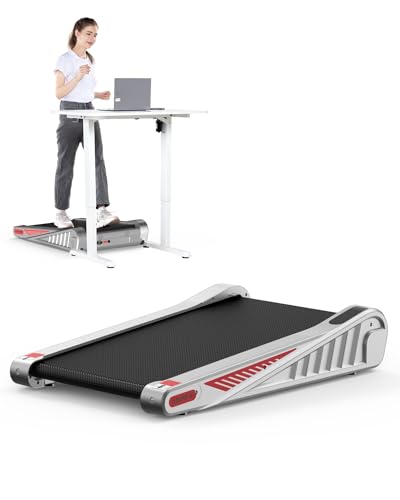Exploring the Benefits of Walking Pads: The Non-Electric Choice
In the age of modern physical fitness services, where innovation reigns supreme and sophistication is often connected with electrical devices, a brand-new trend is emerging in practical workout: the non-electric walking pad. These easy yet efficient pieces of devices are catching the interest of physical fitness lovers and casual walkers alike.
In this detailed guide, we will explore what walking pads are, their advantages, comparisons with conventional treadmills, and supply responses to frequently asked concerns.
What is a Walking Pad?
A walking pad is a compact exercise platform designed mainly for walking, running, or light running. Unlike conventional treadmills which depend on electrical power, non-electric walking pads operate on a manual system. here are the findings propel themselves forward by walking or running, harnessing their own body weight.
Key Features of Non-Electric Walking Pads:
- Compact Design: Most walking pads are light-weight and foldable, making them easy to shop and transportation.
- User Controlled: The speed and strength of the exercise depend upon the user's own effort.
- No Plug Required: Perfect for energy-conscious people, these pads require no power usage.
- Quiet Operation: A quieter alternative to electric treadmills, making them ideal for homes or shared spaces.
Advantages of Using Non-Electric Walking Pads
Using a non-electric walking pad presents a series of benefits. Below are some of the popular benefits:
| Benefit | Description |
|---|---|
| Cost-Effective | Non-electric models are typically more economical than their electric equivalents, making them accessible to a more comprehensive audience. |
| Boosted Flexibility | Users can stroll or jog at their own rate, which is specifically useful for beginners or those recovering from injuries. |
| Space-Saving Design | Due to their compact size, walking pads fit easily in smaller sized areas, making them perfect for office or home use. |
| Low Maintenance | With no electrical parts, these pads require very little maintenance and are less most likely to break down. |
| Eco-friendly | No electricity indicates no ecological effect from energy consumption, making them a terrific choice for eco-conscious consumers. |
Comparing Non-Electric Walking Pads to Traditional Treadmills
| Function | Non-Electric Walking Pad | Traditional Treadmill |
|---|---|---|
| Power Source | Manual (user-powered) | Electric (plugged in) |
| Cost | Lower in advance cost | Higher preliminary financial investment |
| Size | Compact and portable | Larger, often fixed |
| Noise Level | Extremely peaceful | Can be noisy, depending upon motor and use |
| Personalization | Minimal user settings | Substantial settings (speed, incline, programs) |
| Physical Engagement | Greater intensity and effort needed | Simpler to use but might motivate less engagement |
How to Use a Non-Electric Walking Pad
Using a non-electric walking pad is straightforward. Here's a basic step-by-step guide:
- Set Up: Place the walking pad on a flat, steady surface area.
- Change the Pad: Ensure that it is at a comfortable position for usage-- most pads have adjustable angles to tailor the walking experience.
- Warm-Up: Before using the pad, carry out a quick warm-up routine, which can consist of gentle extending.
- Start Walking: Step onto the pad and begin walking at a moderate pace. As your speed increases, you will discover the pad moving.
- Display Your Intensity: Pay attention to your heart rate and how you feel. Adjust your speed according to your physical fitness level.
- Cool Down: Gradually decrease your speed before stepping off the pad, followed by cooldown stretches.
Best Practices for Using Walking Pads
To optimize the advantages of non-electric walking pads, think about the following tips:
- Incorporate Variety: Alternate between walking and jogging for a full-body workout.
- Engage Your Core: Maintain excellent posture by keeping your core engaged while using the pad.
- Hydration: Remember to hydrate before and after your workout.
- Consistency: Aim to use the walking pad frequently. Start with 15-20 minutes and slowly increase the period.
Regularly Asked Questions
1. How efficient are non-electric walking pads for weight reduction?
Non-electric walking pads can be efficient for weight loss when utilized consistently in combination with a healthy diet plan. Because they require more effort, they can enable higher calorie expenditure throughout exercises.
2. What is the weight capacity of a lot of walking pads?
Most non-electric walking pads can support individuals as much as 250-300 pounds, depending upon the model. Always inspect the producer's specifications for precise info.
3. Are there any recommended brand names for walking pads?
Some popular brand names include InMovement, ProForm (manual models), and ECHANFIT, each offering a variety of features tailored to varied user preferences.
4. Can non-electric walking pads be utilized outdoors?
These walking pads are generally created for indoor usage. Utilizing them outdoors might expose them to weather conditions that could impact their sturdiness.
5. How do I keep a walking pad?
Numerous non-electric walking pads are foldable. Merely fold them up and keep them in a closet, under a bed, or any practical area.
Non-electric walking pads provide an unique and efficient aerobic exercise option that highlights simpleness and accessibility. By permitting users to develop their physical fitness program without the limitations of power cords and complicated interfaces, these pads empower people throughout numerous fitness levels.
For anyone searching for an economical, space-saving, and efficient option to traditional workout devices, checking out the world of non-electric walking pads might be the perfect next step in their fitness journey. By choosing to purchase one of these versatile tools, individuals can cultivate much healthier practices while enjoying the empowering experience of motion on their own terms.

